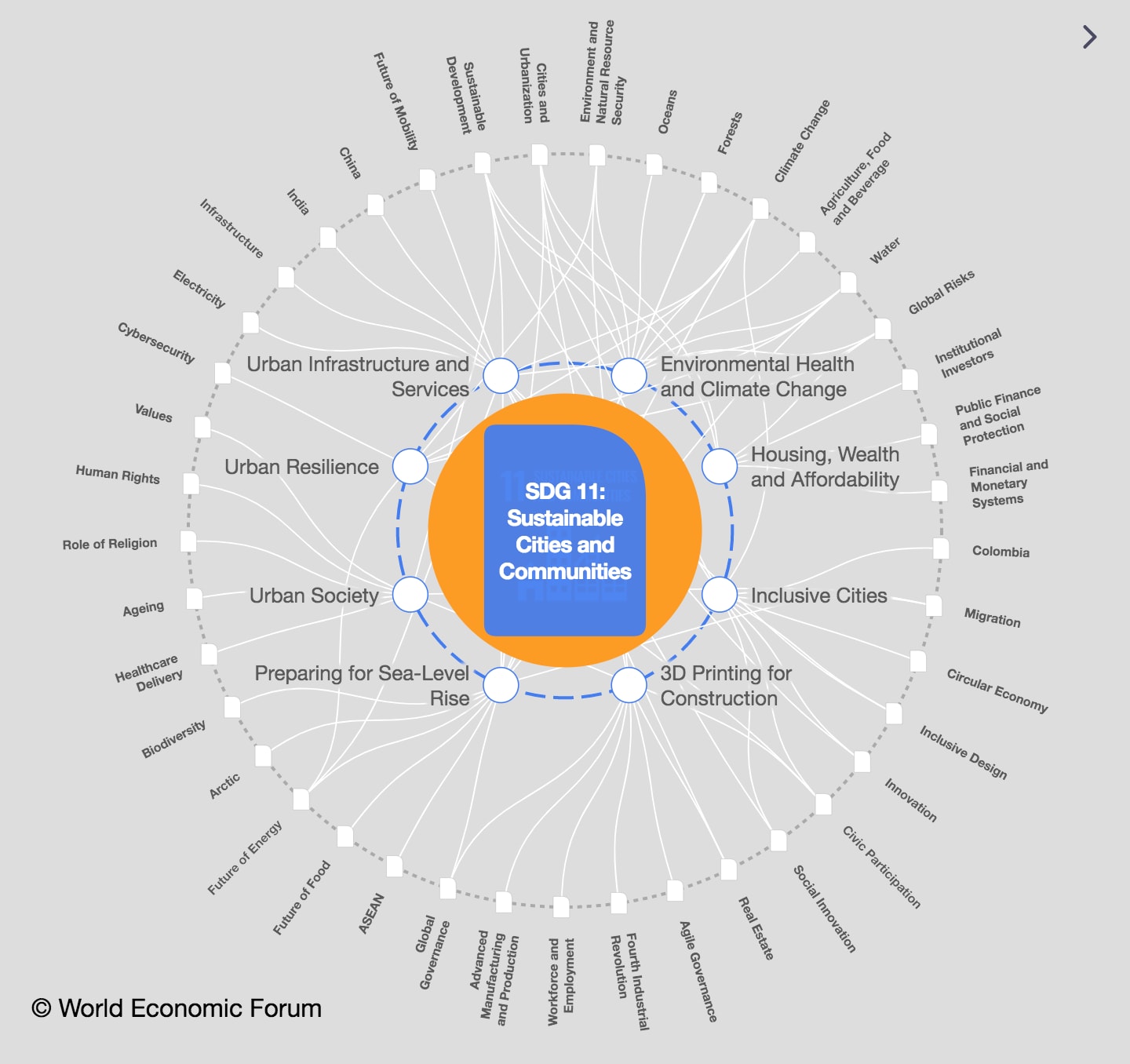Davos 2022: How to bring nature-based solutions to our cities

Key leaders have shared an overview of the steps and the work that must be done to bring nature-based solutions to cities. Image: World Economic Forum/ Valeriano
Listen to the article
- Key leaders have shared an overview of the steps and the work that must be done to bring nature-based solutions to cities.
- Top priorities include a clear implementation agenda, a fair transition with the most vulnerable communities in mind, comprehensive policy measures, and wiser investments.
- The session titled 'Returning Nature to Cities' took place at the Annual Meeting 2022 of the World Economic Forum in Davos.
Urban planning is facing enormous challenges as cities adapt to climate change. Participants at the Returning Nature to Cities session at Davos 2022 discussed where we are, and how we can move forward
Listen to the full session here.
Country-level commitment to nature-based solutions is key
Maimunah Mohd Sharif, Executive Director at UN-Habitat, said cities are working on translating a comprehensive urban agenda, including focusing the protection of nature into action and outcomes. However, Sharif insisted "we need to step back and rethink how to move forward". She advised urban planners to start by looking for local solutions. If solutions are not available locally, "look and learn globally. Come back to the city and apply them".
She also warned that cities are lagging behind in terms of agenda implementation. Country-implementation reporting is lacking consistency: "We are receiving 32 reports out of 193", she said. Therefore, urgent action is still needed and needs to be sped up. For this reason, on 28 April 2022, more than 90 UN Member States committed to implementing the urban agenda through nature-based solutions.

Not leaving people behind
Sheela Patel, Director of the Society for the Promotion of Area Resource Centres (SPARC), with more than 38 years of experience in poverty alleviation and social justice advocacy in India, predicts we are getting to an era of "metropolitanization". Patel said, "We see this as a double leap that we need from our governments and our communities."
Metropolitan cities are going to have more and more satellite cities taking on rural areas, making it difficult for city planning to keep up, and policymakers and planners would need to focus on climate adaptation while trying to make cities greener at the same time. According to Patel, 30 to 70% of people who live in poor communities still lack minimum development investments to have proper water and sanitation systems.
Placing cities at the forefront of nature protection
According to Colombian President Iván Duque, "The way we live in cities is the most precious threat to ecosystem management". Colombia's capital water system depends mainly on Páramos, or high altitude ecosystems close to the city. He explained that this inspired BiodiverCities by 2030, a joint initiative between the Government of Colombia and the World Economic Forum. Its purpose is to place cities at the forefront of nature protection, with both carbon neutrality and nature positivity being at the centre.

Colombia is continuing to work at the policy level to apply various nature-based solutions locally. These include energy transition, clean mobility like cycling networks and electrification, the circular economy, water sustainability, green density, river management and sanitation among others. Duque highlighted that Colombia is the first Latin American country to launch a green taxonomy that seeks to attract green investment to accelerate the country's environmental goals.
Wise investment is not just about getting more money
Nature-based solutions have been around for a while. Mike Haigh, the executive chair of Mott MacDonald Group Limited said there are many ways to bring nature-based solutions to cities. "We should be making investments work harder. This isn't about finding extra money because the solutions that are found can even be cheaper, so let's make our investments work harder," he said.
Finally, Duque emphasised the driving force of youth to act against climate change. For example, SAVIA, a Colombian state-led environmental education initiative, works with thousands of young people in Bogota and across the country who want to be part of the solution.
Don't miss any update on this topic
Create a free account and access your personalized content collection with our latest publications and analyses.
License and Republishing
World Economic Forum articles may be republished in accordance with the Creative Commons Attribution-NonCommercial-NoDerivatives 4.0 International Public License, and in accordance with our Terms of Use.
The views expressed in this article are those of the author alone and not the World Economic Forum.
Stay up to date:
SDG 11: Sustainable Cities and Communities
Related topics:
Forum Stories newsletter
Bringing you weekly curated insights and analysis on the global issues that matter.
More on Forum InstitutionalSee all
Beatrice Di Caro
December 17, 2024






